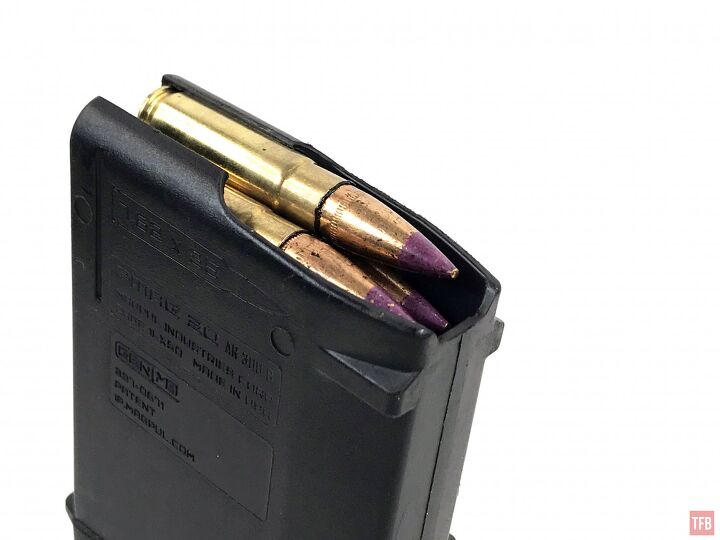We all know that tracers exist. They have pragmatic uses, especially when shooting full auto at night. When used responsibly they can be fun. However, tracers are really bright. They are like miniature flares. While they help you see where your rounds are impacting they have an opposite effect for those under fire. The recipients of your miniature signal flare showcase can see the tracers and figure out where they are coming from, assuming they didn’t catch the rounds first. Well, apparently there are such things as dim tracers. These infrared tracers are dim to the naked eye and really only show up under night vision. I ordered some and put them to the test.
Infrared Tracers .308 147 gr

It was my friend Paul that clued me onto infrared tracers. American Reloading was selling 250ct .308 147 gr projectiles that are purple tipped. This is so you can easily identify the bullets are tracers and not normal.
Paul found a data sheet by Nammo made in May 2010. It is written by Peter Hedsand and he explains a little bit about the purpose of their IR-Dim Tracer. Basically, it is a tracer that cannot be seen by the opposing force and requires night vision to see and utilize it.
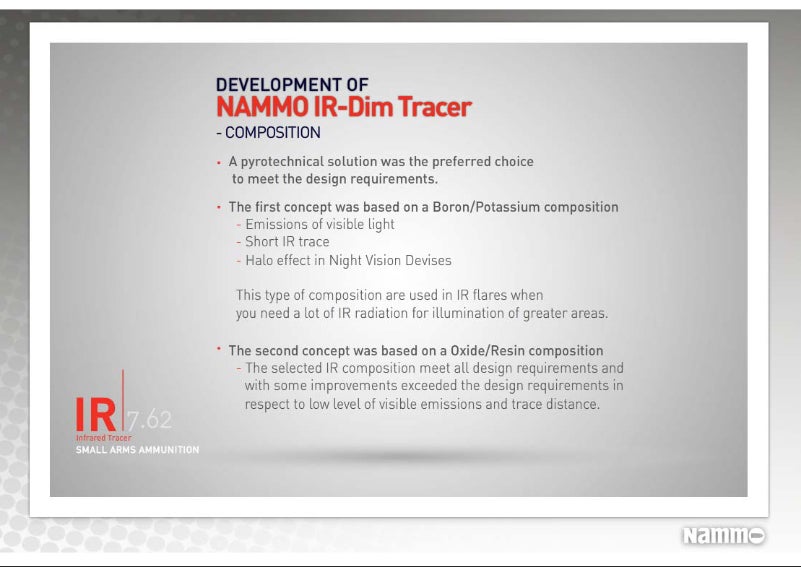
Photo by Nammo
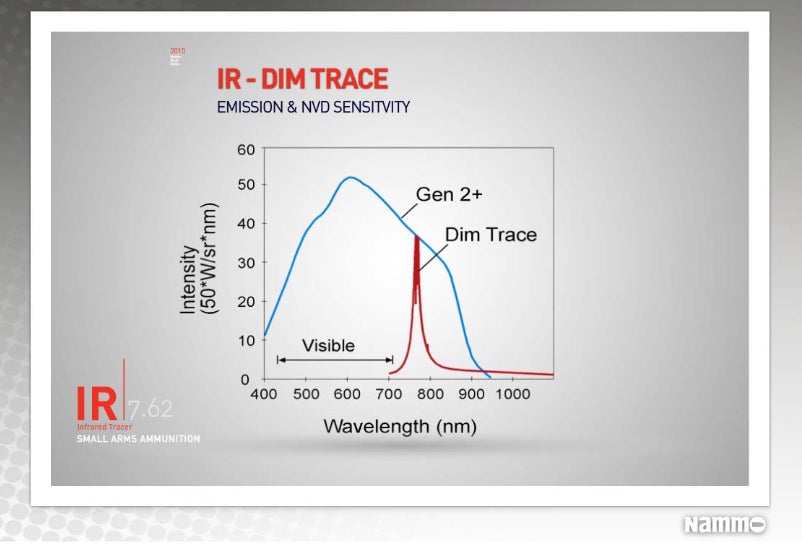
Photo by Nammo
Apparently, infrared tracers burn at a very specific wavelength. Below are the benefits of infrared tracers versus conventional tracers.
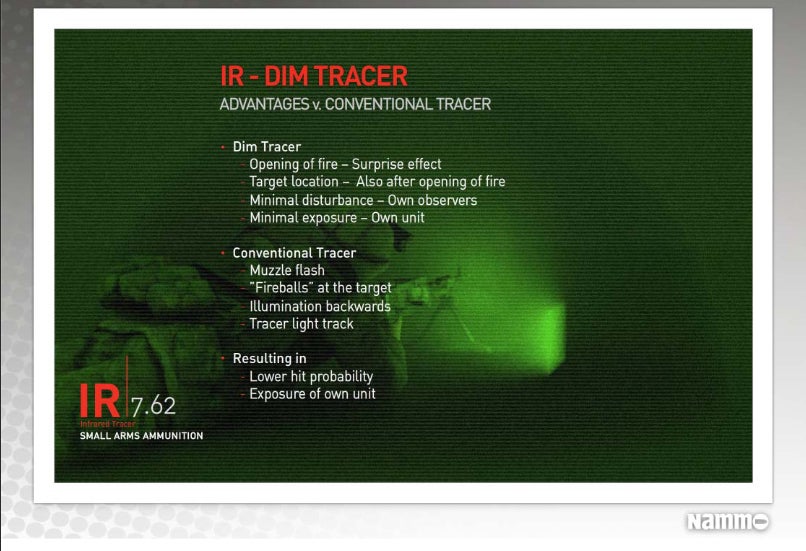
Photo by Nammo
Infrared tracer vs conventional tracer as seen in first-person point of view through night vision.
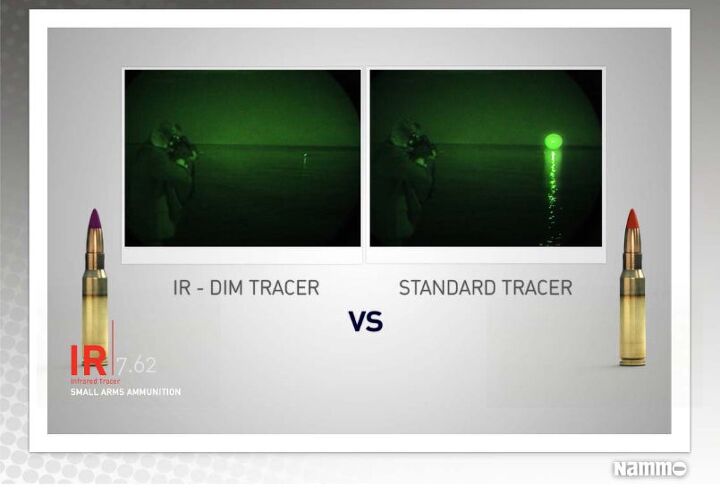
Photo by Nammo
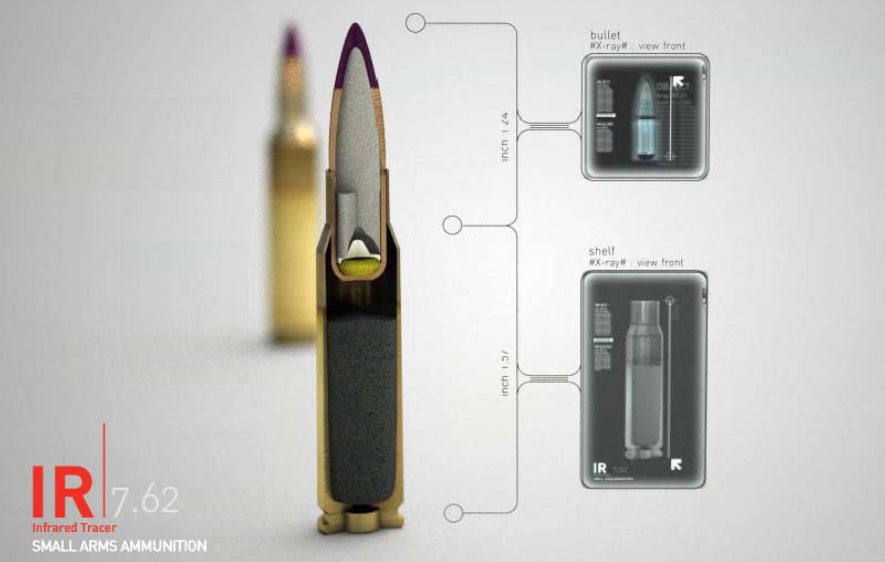
The projectiles that I bought from American Reloading were sold as .308 but they are just that, projectiles. It was my friend Kythe who reloaded them into .300BLK for me so we could test them. I ordered these back in May and have not had a chance to shoot them safely until I went to the Nevada desert.

Shooting Tracers
I have shot conventional tracers in the past. I got some .308 tracers from American Marksman. Here is a video shot through a Leupold spotting scope with a FLIR Hiss mounted in front. It is a cooled thermal system so it is really sensitive to temperature differentials. You can see the bullet fly through the air and splash onto the target.
Here is a video filmed through a Vortex scope lobbing the .308 tracer out to 1000 yards in the day time.
Here are some clips from some tracers I got from Ventura Munitions.
My friend Vic from Spartan Precision managed a hit at 1000 yards with the Ventura Munitions .223 long-range tracer. Watch the ground for the reflection of the tracer. There is a false glowing effect from the Acebeam LEP light.
Now here are some conventional .300BLK tracers, also from Ventura Munitions. Again, watch the ground reflection of the tracer.
Now For Some Infrared Tracers
The infrared tracers performed as advertised. I was very curious how dim they would be and how bright they would actually show up to the naked eye versus analog night vision.
I tested the infrared tracers in Nevada under the belief that there isn’t much that can burn, unlike California. My friend Paul proved me wrong. Lucky for us, it was only a small patch of grass and it burned itself out by the time they got to it to try and put it out. In the video below, there is an arrow to the right. Click on it to switch to the second video.
Paul did find the projectile that started the fire. You can see the back of the projectile. What surprised my friend Kythe and myself was that the IR Tracer projectiles had a total copper jacket. The back of the bullet was sealed off with a thin layer of copper. Yet somehow the igniting of the gun powder breaks that seal to ignite the phosphorus or whatever chemical is producing the dim tracer.



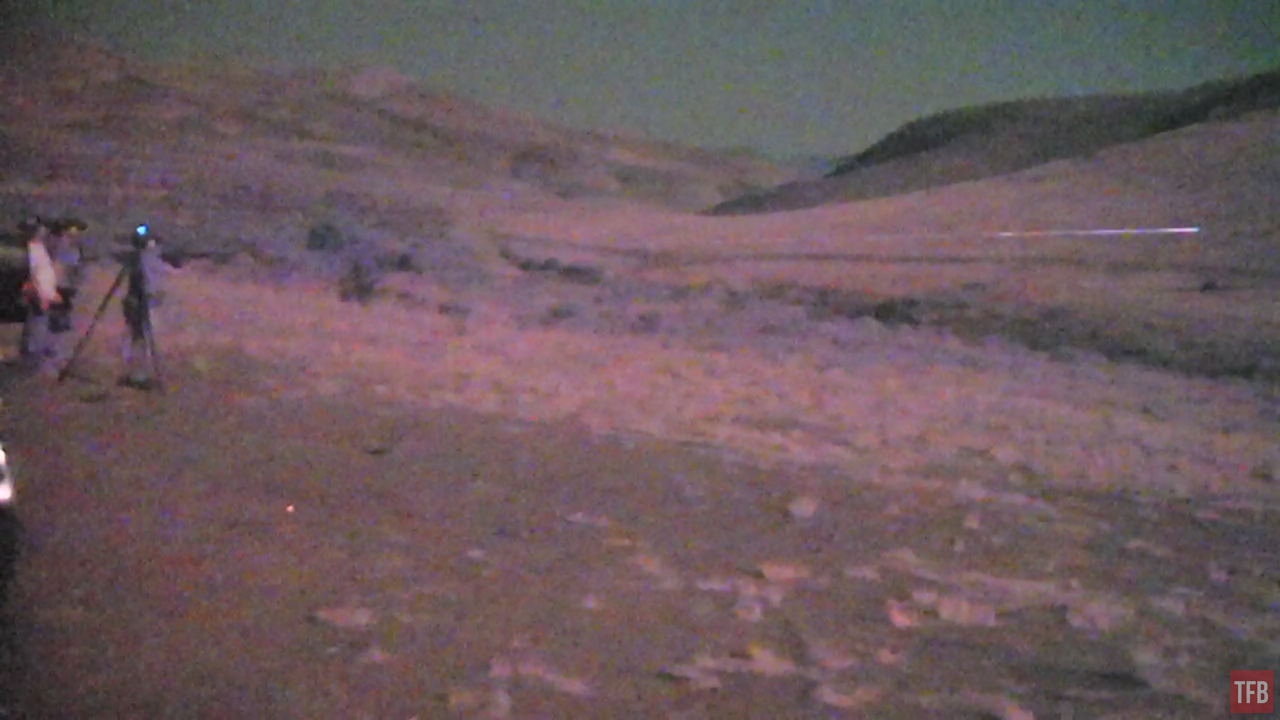
When I tested the infrared tracer, I noticed you could still see it with the naked eye. The tests you saw above were shot under a near full moon. Even in such bright ambient light settings, the IR tracer was visible with the naked eye but only if you are the shooter. You can see in the photo above, it is a screen capture from a SiOnyx Aurora Sport, the infrared tracer is visible when perpendicular to the shooter. However, this was on night mode which is the highest sensitivity level for the Aurora camera. I filmed the same shot with regular analog night vision. You can see two screen shots below.
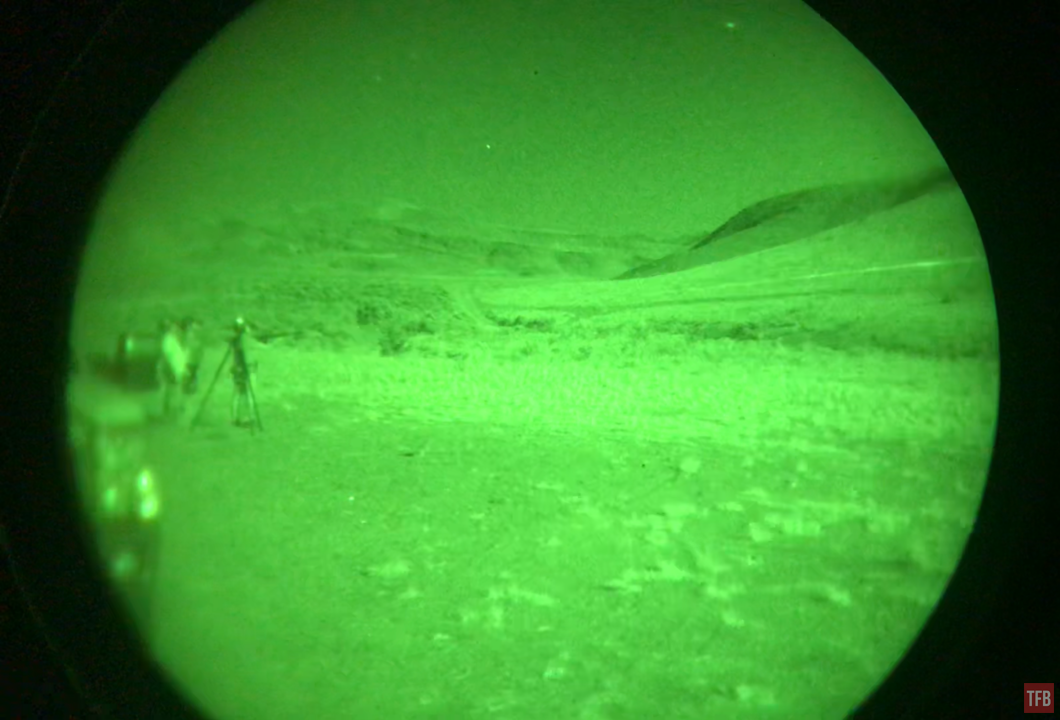
It is faint but you can see a bright green line, that is the infrared tracer.
I did see a muzzle flash. This was out of my Troy Pump Action Rifle suppressed with an Omega 36M. The IR tracer round was loaded with just 11.5 grains of IMR4227.
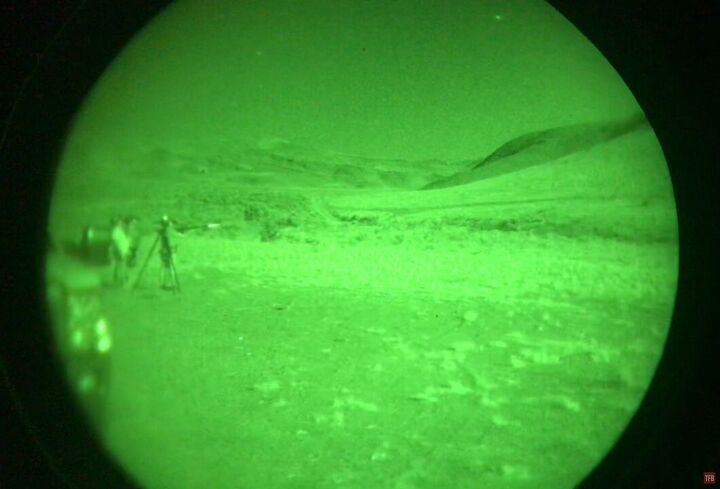
The problem I had was I did not have regular tracers with me that night and did not think of a way to capture the infrared tracer without the aid of night vision or sensitive CCD sensors that can see the infrared spectrum. So I went back out and retested the IR tracers.
Here is a comparison with conventional .223 tracer from American Marksman.
Here is a video shot with a SiOnyx Aurora, first in Twilight mode and then Night Mode. Twilight mode still has the IR filter over the sensor. So you can see the difference.
Final Thoughts On Infrared Tracers
I know there are people who have some experience with infrared tracers especially if you served in the military. However they are relatively unknown to others, myself included until now. CBC Ammunition has a video on YouTube about their infrared tracers but it is misleading. They use a minigun on a helicopter.
They have a video shot that is split screen with NVD and without NVD however, they probably tried filming the unaided video with a digital camera and those are not that sensitive to low light. The human eye is a lot more sensitive. I can attest that you can see the IR tracer with a naked eye, as long as you are on the same side as the shooter. There were three other people out there with me that can attest to this. Even though the infrared tracer is dimmer than conventional tracers, it is still hot enough to set fires to dry brush so be smart and don’t try to shoot these for a gender reveal party during a hot dry spell in California.
 Your Privacy Choices
Your Privacy Choices
